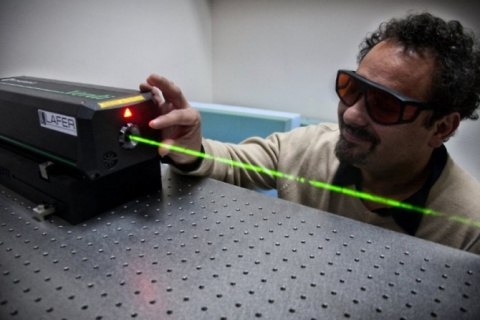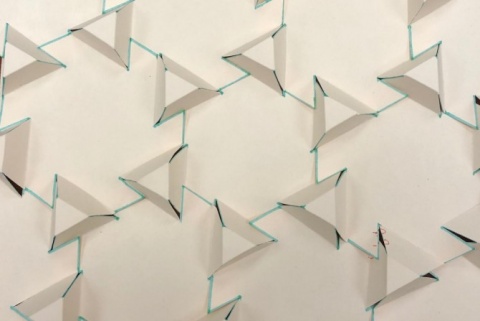Ingeniería
Laser diode emits deep UV light
Noticia en inglés
Nagoya University scientists, in cooperation with Asahi Kasei Corporation, have succeeded in designing a laser diode that emits deep-ultraviolet light, according to research published in the journal Applied Physics Express.
"Our laser diode emits the world's shortest lasing wavelength, at 271.8 nanometers (nm), under pulsed [electric] current injection at room temperature," says Professor Chiaki Sasaoka of Nagoya University's Center for Integrated Research of Future Electronics.
Previous efforts in the development of ultraviolet laser diodes had only managed to achieve emissions down to 336 nm, Sasaoka explains.
Laser diodes that emit short-wavelength ultraviolet light, which is called UV-C and is in the wavelength region of 200 to 280 nm, could be used for disinfection in healthcare, for treating skin conditions such as psoriasis, and for analysing gases and DNA.
The Nagoya University deep-ultraviolet laser diode overcomes several issues encountered by scientists in their work towards the development of these semiconducting devices.
The team used a high quality aluminium nitride (AlN) substrate as their base for building up the layers of the laser diode. This, they say, is necessary, since lower quality AlN contains a large amount of defects, which ultimately impact the efficiency of a laser diode's active layer in converting electrical into light energy.
![[Img #58729]](https://noticiasdelaciencia.com/upload/images/01_2020/8342_221863_web.jpg)
Far field pattern of UV-C laser projected onto a fluorescent screen. (Credit: 2019 Asahi Kasei Corp. and Nagoya University)
In laser diodes, a 'p-type' and 'n-type' layer are separated by a 'quantum well'. When an electric current is passed through a laser diode, positively charged holes in the p-type layer and negatively charged electrons in the n-type layer flow towards the center to combine, releasing energy in the form of light particles called photons.
The researchers designed the quantum well so that it would emit deep UV light. The p- and n-type layers were made from aluminium gallium nitride (AlGaN). Cladding layers, also made from AlGaN, were placed on either side of the p- and n-type layers. The cladding below the n-type layer included silicon impurities, a process called doping. Doping is used as a technique to modify a material's properties. The cladding above the p-type layer underwent distributed polarization doping, which dopes the layer without adding impurities. The aluminium content in the p-side cladding was designed so that it was highest at the bottom, decreasing towards the top. The researchers believe this aluminium gradient enhances the flow of positively charged holes. A top contact layer was finally added that was made from p-type AlGaN doped with magnesium.
The researchers found that the polarization doping of the p-side cladding layer meant that a pulsed electric current of "remarkably low operating voltage" of 13.8V was needed for the emission of "the shortest wavelength reported so far."
The team is now conducting advanced joint research with Asahi Kasei Corporation to achieve continuous room temperature deep-UV lasing for the development of UV-C semiconductor laser products. (Fuente: Nagoya University)



